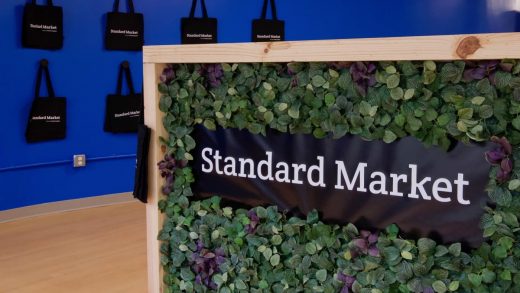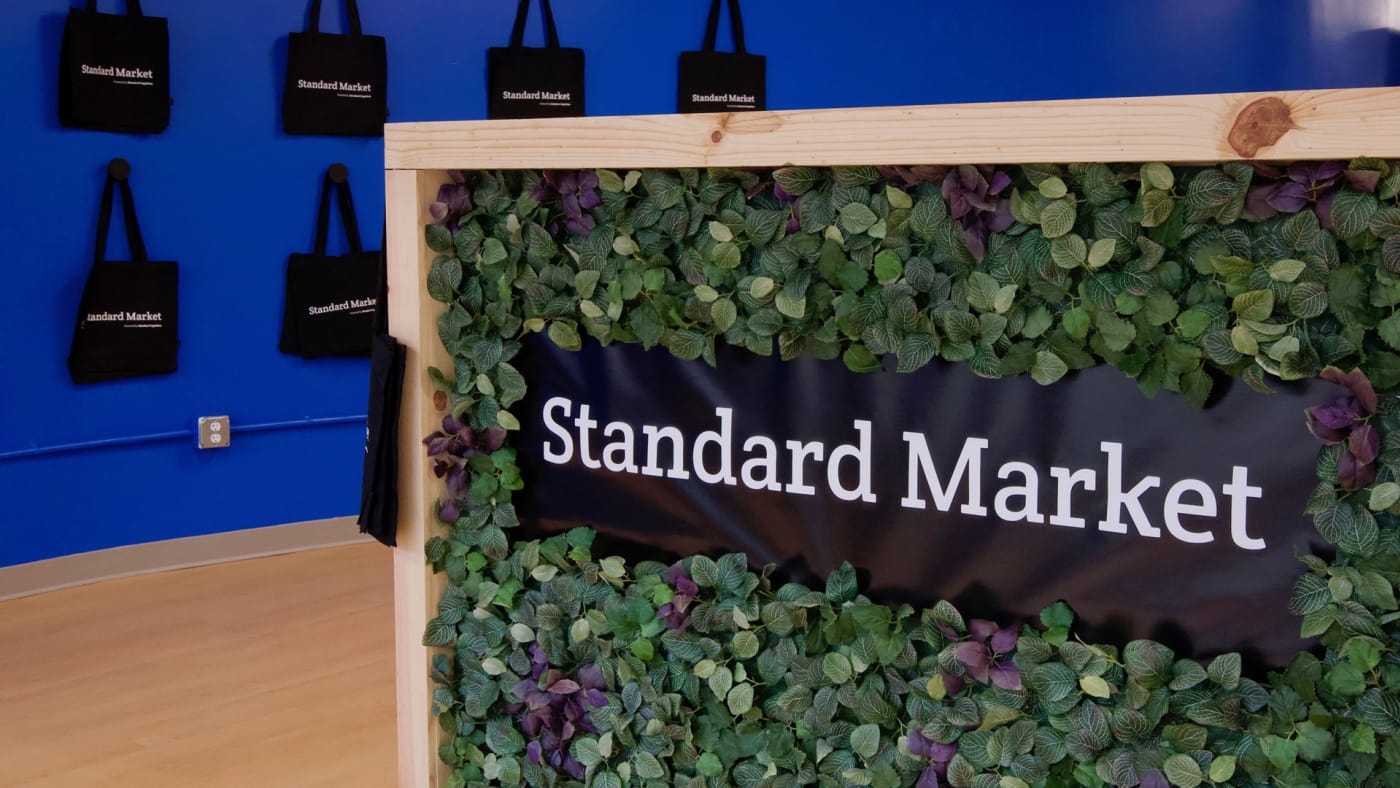This San Francisco mini-mart is the hottest Amazon Go rival yet
Like Kleenex or Hoover, Amazon Go has become the name brand that describes a whole class of products. In this case, it’s stores that replace human checkers with cameras and image-recognition AI to automatically ring up customers based on what they grab. But many rival tech providers are out there, and one of the hottest, Standard Cognition, just opened up shop in San Francisco.
Standard Cognition is the first (and so far only) of these companies to announce a deal to outfit actual stores with its technology–over 3,000 in Japan by July 2020. But the 1,900-square-foot Standard Market store, a tad larger than the inaugural Amazon Go in Seattle, is the company’s first real-world demo. And it’s very real world. I navigated around homeless people and urine puddles on my way to a pre-opening tour of the store at 1071 Market St. earlier this week.
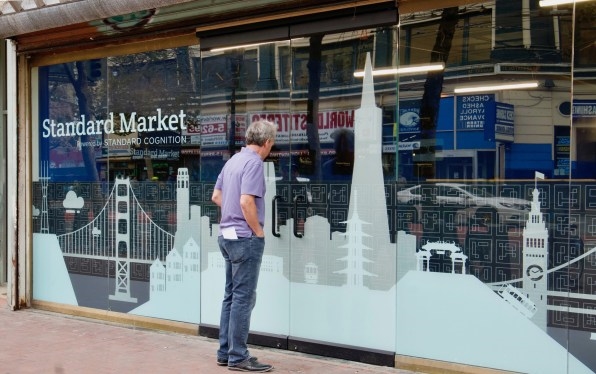
The spot was the easiest place to get a lease quickly, says COO Mike Suswal (one of the company’s seven cofounders) when he met me at the door. It’s also a very fitting location: Convenience stores are staple institutions of tight urban neighborhoods like these, most of which are far from full-scale supermarkets or greengrocers. If the technology is going to work, it needs to work in places like this.
And San Francisco’s Mid-Market neighborhood is typical of the erratic gentrification sweeping American cities. A downtrodden man in a wheelchair rolled past the glass-fronted store from one direction while young professionals trudged by from the other. Hipster bicycle shop Huckleberry is next door to Standard Market, and Twitter’s HQ is only three blocks away–as is the Tenderloin neighborhood, San Francisco’s version of skid row. “We do have a security guard on premise whenever we’re open,” says Suswal.
The location, size, and selection of merchandise distinguish Standard Market from what’s technically the first non-Amazon automated grab-and-go store–rival Zippin’s truly tiny market, which opened in beta on August 20 in a spiffier neighborhood near Salesforce’s headquarters. Only those with invites can shop at Zippin, while Standard Market will be open to the public. (The limited hours will vary initially, with the store open most weekdays from 1 to 3pm in the next two weeks.) Zippin also currently stocks fancier fare, such as Laiki Red Rice Crackers and Burma Love tea leaf salad. Standard Market mostly stocks staples like Campbell’s Creamy Tomato Soup, Cliff Bars, Oreos, Ziploc bags, and single rolls of toilet paper.
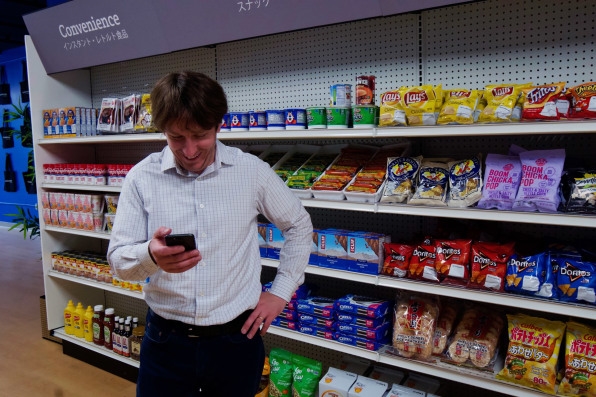
Minimal sensors
A bigger difference, perhaps, is the level of technology. Both are parsimonious with overhead cameras compared to Amazon Go’s system, which reportedly involves hundreds of cams for an 1,800-foot store. Zippin’s system requires just 15 of them to track purchases in a 1,000-square-foot store, while Standard Market needs about 27 for 2000 square feet–essentially the same camera-per-square-foot ratio. But Zippin also requires backup readings from bespoke shelving units with weight sensors.
“A lot of retailers spend a lot of money on their marketing departments. They don’t want to change their branding or how things are set up,” says Suswal. “So we can’t enforce that they use a certain kind of shelf unit or ask them to put something in a particular place.”
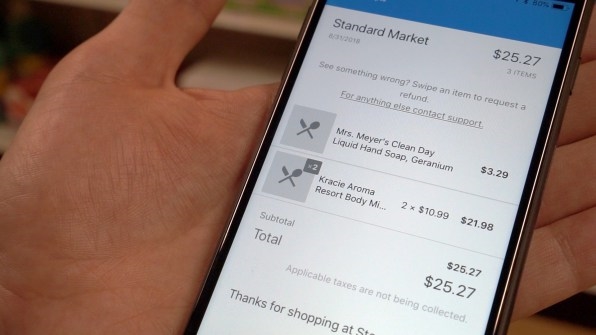
That could cut costs for struggling mom-and-pop stores. Standard Cognition wouldn’t provide estimates for how much it costs to equip a store, but it claims the figure would be lower than Zippin’s estimate of $20,000 to $25,000 for hardware and installation per 1,000 square feet of store. Both companies will make money through a monthly fee for their image recognition and inventory tracking services. In a follow-up email to my visit, Standard Cognition says that fees will depend on factors including “store size but also store layout and assortment complexity.”
Neither company is out to make money on their San Francisco markets, which simply demonstrate how the tech can help potential store-owner clients. Standard Cognition says its Market Street shop will be open “indefinitely.”
Standard Cognition’s system is unperturbed by shoppers who reconsider buying an item and put it back in the wrong place, says Suswal, as he demonstrates mindlessly sticking products all over the shelves. “However, we will tell the system when items are out of place,” he says, “so that staff . . . can be a little bit more efficient in how they restock.”
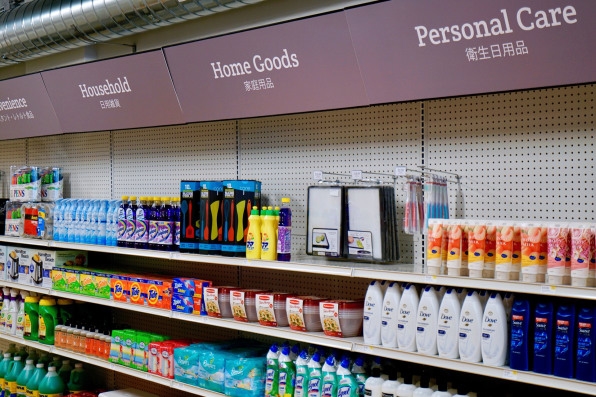
Suswal emphasizes the need to train visual machine-learning systems vigorously for product recognition. As customers shop, “you . . . can’t see the item completely every time,” he says, grabbing a can of tomato sauce in his hand with various grips that obscure much of the item. Teaching the system a new product takes around two minutes of manhandling before the cameras, after which the update can be pushed out to all stores.
For the demo store in San Francisco, though, Standard Cognition had to do some cramming. “We ended up hiring 100 actors to come in here,” says Suswal. This troupe did multiple five-hour faux shopping sessions over a five-week period.
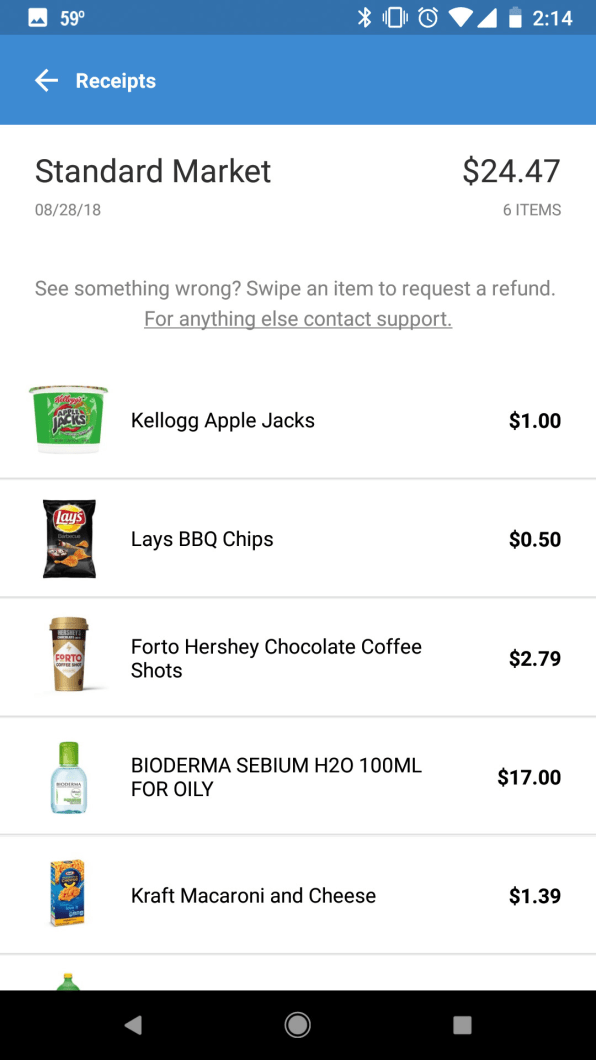
Despite having fewer sensors than Zippin, Standard Cognition is quite confident in the accuracy of its camera system. Accuracy, says Suswal, has reached “five nines,” or 99.999% accuracy for key parts of the tracking system. “We need to get that to like, six or seven lines of accuracy,” he says, to insure the system won’t lose track of customers and their items in a shop.”
Like rivals–such as Zippin, AiFi, Aipoly, and Trigo Vision–Standard Cognition says that it does not track or identify faces. Its AI identifies just enough generic aspects of a person to follow where they go and what they pick up from (or put back on) shelves, without ever knowing who that person really is. That will eventually allow people to shop and pay anonymously (a capability coming in the following months). “All it knows is that there’s a person there and then as you pick up things that adds it to your digital basket,” says Suswal. At the end, they reach a kiosk, which tallies the bill and offers various ways to pay, including cash (by far the preferred method in Japan, Suswal says).
For now, shoppers do need to use the free Standard Checkout app for Android and iOS, which still provides some privacy. “We’re using [payment service] Stripe, and so that’s all tokenized,” Suswal. “So we don’t have any of the information outside of your email address to send you a receipt.”
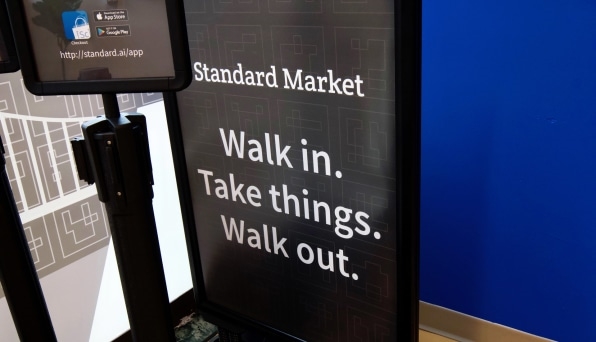
Should mom and pop worry?
The plight of bodegas, or locally owned mini markets, is top of mind in any discussion about store automation. My colleague Elizabeth Segran’s profile of a fancy vending machine startup called Bodega lit a firestorm of concern and indignation about this attempt by ex-Googlers to disrupt the urban institutions. (The company has since rebranded as Stockwell.)
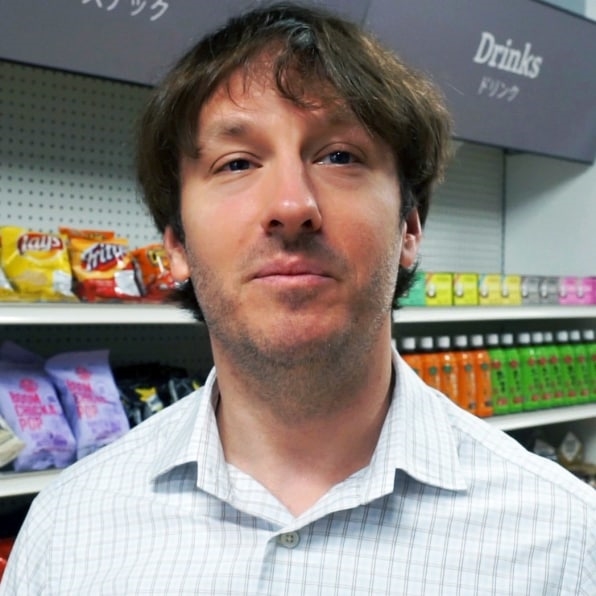
Suswal says that while Standard Cognition’s technology makes it possible to operate a store with fewer employees, the goal isn’t to render existing neighborhood shops obsolete. In fact, he says, the company’s setup can help such merchants remain viable by allowing them to operate with leaner staffs. It’s no accident that the company appeals to Japanese merchants: In a country with a declining, aging population, it’s a challenge to fill store clerk positions, so technology that requires fewer employees is welcome.
American demographics are very different, but Standard Cognition has its own harsh-reality value proposition. “When I was doing my market research before we started the company, it was in New York and predominantly talking to mom-and-pop shops, groceries, greengrocers. And they were frightened that minimum wage is skyrocketing,” says Suswal. “I get the argument to raise minimum wage. I think it’s a good thing. However, these stores are just closing.” If such endangered markets were to automate themselves with Standard Cognition’s platform, he adds, “they would have fewer employees . . . but they would survive.”
(20)

